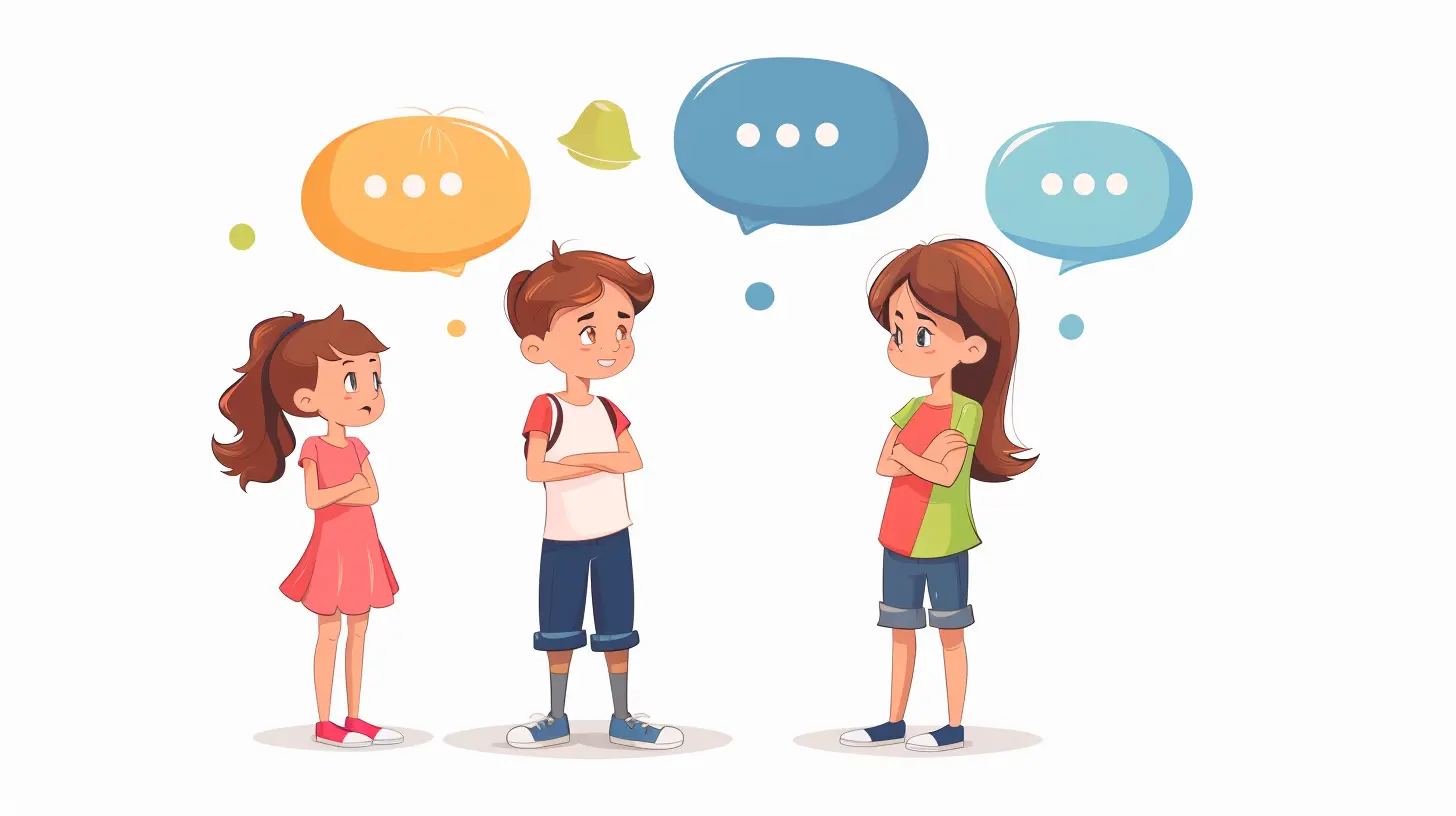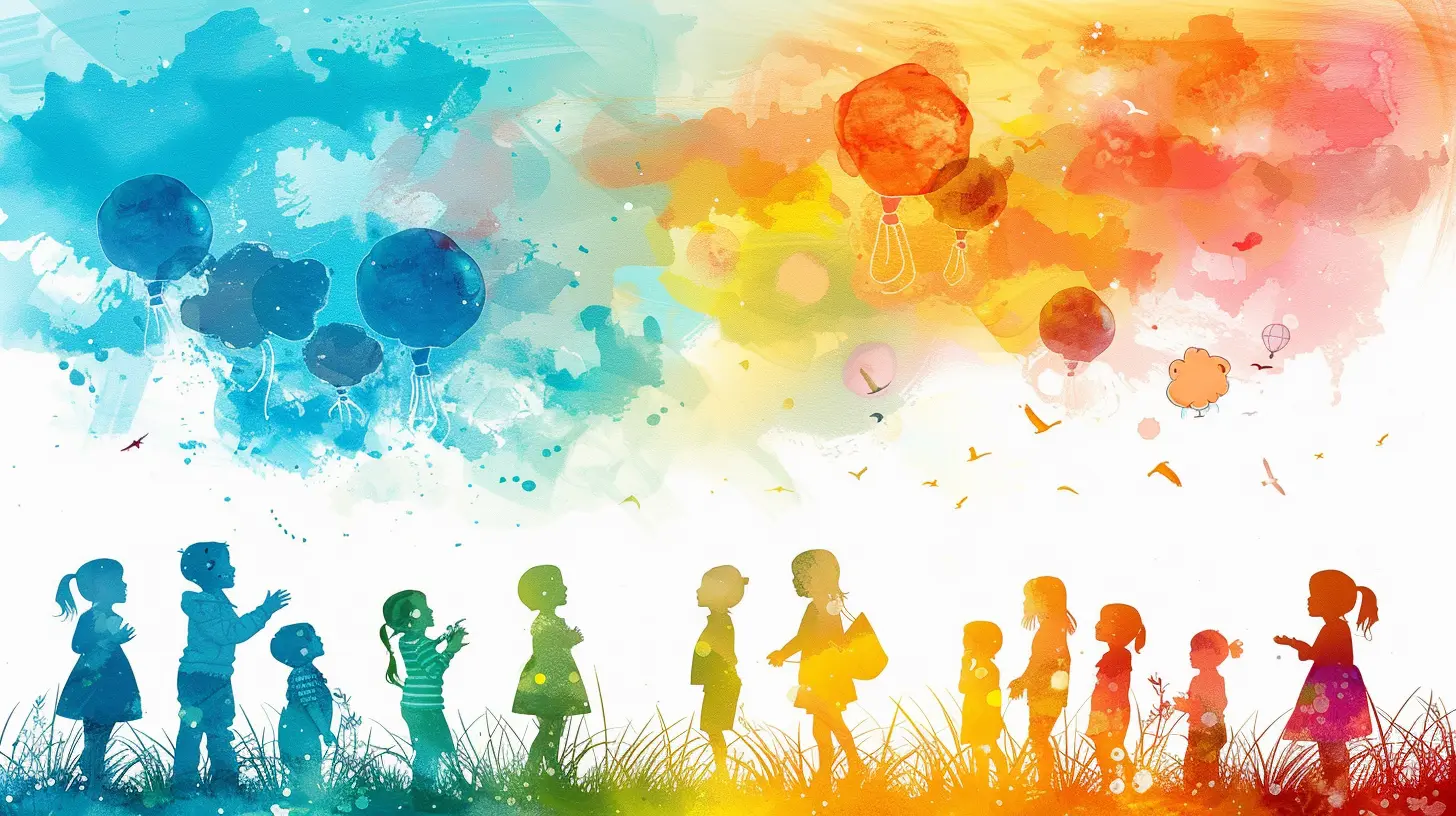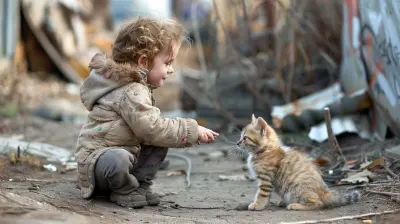Understanding Developmental Stages and Communication Needs
17 May 2025
Parenting is an extraordinary journey—it’s messy, unpredictable, and packed with moments that leave you awestruck. But if we’re being honest, it’s also hard work, especially when trying to understand your child’s ever-changing needs. Kids don’t come with instruction manuals (wouldn't that be nice?), so navigating developmental stages and knowing how to communicate effectively can often feel like solving a puzzle in the dark.
Here’s the deal—if you can grasp the different stages of development and how communication evolves alongside them, you’re halfway to building a strong, meaningful connection with your child. So buckle up, grab some coffee (or tea if that’s your vibe), and let’s break this down one stage at a time. 
Understanding Developmental Stages
Ever heard the phrase, “Kids grow up so fast”? It’s true—each stage of their development seems to fly by, and each one requires a different approach. Let’s take a closer look at the main developmental stages and what you can expect.1. Infancy (0-12 Months)
Ah, the infant stage. It’s all about survival—for both you and your baby. At this point, your little one is like a sponge, soaking up everything through their five senses. They aren’t talking yet, but trust me, they’re communicating loud and clear (hello, 3 a.m. crying fits).Communication Needs
Your baby craves connection. They need you to respond when they cry, coo, or even sneeze. Communication at this stage is all about nonverbal cues. Here are a few pro tips:- Respond promptly: When your baby cries, pick them up. This builds trust.
- Talk to them constantly: Describe what you’re doing, even if it’s mundane (“I’m changing your diaper now!”). Your voice is soothing to them.
- Use facial expressions: Smile, frown, laugh—they’re watching and learning how emotions work.
Think of it as laying the foundation for a house. If the foundation is strong, everything built on top will be solid.
2. Toddlerhood (1-3 Years)
Welcome to the chaos zone. Toddlers are basically tiny tornadoes with legs. They’re curious, stubborn, and testing boundaries every chance they get. But they’re also developing at lightning speed, especially when it comes to communication. This is the stage where they go from babbling to forming actual sentences (and, let’s be honest, some hilariously adorable mispronunciations).Communication Needs
Toddlers understand more than they can say, so patience is your best friend here. Here’s how you can help them navigate this stage:- Label EVERYTHING: “That’s a ball! Look at the red car! Here’s your spoon!” This expands their vocabulary.
- Encourage choices: Give them some control (but not too much). “Do you want the red shirt or the blue one?”
- Stay calm during tantrums: Toddlers don’t have the emotional tools to handle frustration yet, so yelling back won’t help. Instead, use simple, soothing words to validate their feelings.
By the way, don’t sweat the tantrums—they’re like thunderstorms. They seem intense in the moment but eventually pass.
3. Preschool Years (3-5 Years)
This is the magical stage where your child starts to seem more like a tiny human and less like a walking ball of chaos. Their imagination is on overdrive, and they’re constantly asking, “Why?” (and occasionally, “Why not?”). Their communication skills are becoming more sophisticated, but they still need your help fine-tuning them.Communication Needs
Preschoolers are all about storytelling—sometimes real, sometimes made up, and sometimes a mix of both. Here’s how to keep their communication skills on the right track:- Ask open-ended questions: Instead of “Did you like school today?” ask “What was your favorite part of school?”
- Be patient during long-winded stories: Even if it’s the 15th story about a unicorn that turned into a dragon, listen closely. It shows you care.
- Teach social manners: This is the perfect age to introduce “please,” “thank you,” and taking turns during conversations.
Think of this stage as the dress rehearsal for life. They’re experimenting with their words and learning what works.
4. Elementary Years (6-12 Years)
By now, your child is gaining independence but still looks to you for guidance. Friendships become super important, which means their communication style may start to mimic their peers (hello, slang and inside jokes). This stage is all about building confidence and emotional intelligence.Communication Needs
It’s easy to assume your grade-schooler doesn’t need as much attention as they once did, but that’s far from true. Here’s how to keep the lines of communication wide open:- Be available: When they want to talk, make time—even if it’s during your favorite Netflix show.
- Validate their feelings: If they’re upset about something that seems trivial to you, don’t dismiss it. What’s small to you might be huge to them.
- Model effective communication: Show them how to express feelings calmly and clearly.
This is also the stage where you can start introducing deeper conversations about values and empathy—just keep it age-appropriate, of course.
5. Teenage Years (13-18 Years)
Ah, teenagers. They’re like cats—one minute they’re snuggling up to you, the next they’re giving you the cold shoulder. This stage is all about identity and independence. They’re testing the waters, figuring out who they are, and sometimes pushing your buttons in the process.Communication Needs
Talking to a teenager can feel like tiptoeing through a minefield, but don’t let that intimidate you. Here’s how to navigate their communication needs:- Listen more than you speak: Teens want to feel heard, not lectured.
- Respect their privacy: Give them space, but let them know you’re always there if they need to talk.
- Pick your battles: Not everything has to turn into an argument. Focus on the important stuff.
Think of your role as a guide, not a commander. Let them make mistakes (within reason) and be there to help them learn from them. 
Why Communication Matters at Every Stage
Here’s the bottom line—communication is the glue that holds your relationship with your child together. If you put in the effort to understand their developmental stages and adapt your communication style accordingly, you’ll build a bond that lasts a lifetime.Imagine you’re driving on a long road trip. Your child is in the passenger seat, and communication is the map that keeps you both moving in the right direction. Without it, you’re just driving aimlessly, hoping you won’t get lost.
Each stage requires a unique approach, but the ultimate goal is the same: creating a safe, loving environment where your child feels seen, heard, and valued. 
Quick Tips for Better Communication
- Put down your phone: Nothing says “I care” like giving them your full attention.- Be consistent: Mixed signals confuse kids, so stick to your word.
- Apologize when you’re wrong: This shows humility and sets a great example.
- Use humor: Laughter is a universal language, and it works wonders in tense situations.

Wrapping It Up
Parenting isn’t about being perfect (spoiler: none of us are). It’s about showing up, doing your best, and adapting as you go. Understanding your child’s developmental stages and communication needs is like having a cheat sheet that makes this wild journey a little easier.So, the next time your baby cries, your toddler throws a tantrum, or your teenager gives you that dreaded eye roll, take a deep breath. Remind yourself that these moments—frustrating as they are—are opportunities to connect, learn, and grow together.
And hey, when in doubt, just listen. Sometimes, all your child really needs is to know you’re paying attention.
all images in this post were generated using AI tools
Category:
Communication With KidsAuthor:

Kelly Snow
Discussion
rate this article
3 comments
Hesper Stevens
Navigating developmental stages is akin to decoding a unique language for each child. As parents, our challenge lies not just in understanding their needs, but in recognizing the profound emotions and thoughts they struggle to express. By fostering open communication, we nurture their growth and strengthen our bonds.
June 1, 2025 at 4:08 PM

Kelly Snow
Thank you for your insightful comment! You beautifully capture the essence of parenting—understanding and supporting our children's unique emotional languages is key to nurturing their development and deepening our connections.
Galina Cooper
How do stages influence language?
May 28, 2025 at 2:21 PM

Kelly Snow
Stages of development influence language by dictating the cognitive and social skills children acquire, impacting their ability to understand and use language effectively at different ages.
Sonya Davis
Great insights! Communication is key to parenting!
May 19, 2025 at 2:43 AM

Kelly Snow
Thank you! I completely agree—effective communication is essential for supporting our children's growth at every stage.



